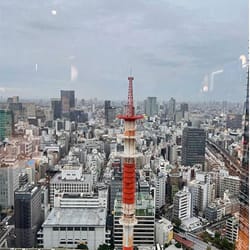Travel isn’t only about what you see — it’s also about what you feel.
On my recent trip to Japan, I set out on a curious mission: to compare four of the world’s greatest bathing traditions — the Japanese onsen, the Finnish sauna, the Russian banya, and the Turkish hammam.
Each promises a unique form of purification — body, mind, and perhaps, spirit. But which one delivers the ultimate sense of renewal?
1. The Japanese Onsen – Serenity in the Steam
My journey began in Hakone, Japan — a town built on volcanic veins and wrapped in mist. The onsen is more than a bath; it’s a ritual. You must wash thoroughly before entering, and once inside, silence reigns.
The mineral-rich waters (usually around 40–45 °C) are believed to ease fatigue, improve circulation, and rejuvenate the skin. No swimsuits are allowed — the purity of the body mirrors the purity of the experience.
As I soaked, watching clouds drift between cedar-covered hills, I realized why the Japanese call this iyashi, or “healing.” It’s calm, meditative, almost sacred.
Verdict: Best for mindful relaxation and spiritual stillness.
2. The Finnish Sauna – Minimalism Meets Endurance
Next came Finland — the land of lakes, birch trees, and more saunas than cars.
A traditional Finnish sauna is a wooden room heated to 80–100 °C, with low humidity. When someone pours water over the hot stones (a ritual known as löyly), a brief cloud of steam softens the dry heat.
The real test? Jumping straight from the sauna into an icy lake or rolling in snow. The shock hits like a lightning bolt — invigorating, cleansing, undeniably addictive.
For Finns, the sauna isn’t about luxury — it’s about balance and quiet strength. “In the sauna, everyone is equal,” they say. After one session, I understood why.
Verdict: Best for cleansing the body and sharpening the spirit.
3. The Russian Banya – Heat, Birch, and Brotherhood
If the Finnish sauna is polite, the Russian banya is its passionate cousin.
Temperatures hover between 60–90 °C, but the humidity is high — sometimes near 70–90 %. The result is a thick, steamy heat that feels like being hugged by fire.
Then comes the venik — a bundle of birch or oak branches used to lightly strike the skin. At first, it’s startling. Then it becomes rhythmic, almost musical — boosting circulation and releasing tension.
Between rounds, people pour cold water over themselves or plunge into ice baths. Laughter echoes through the steam; tea and conversation flow freely. The banya is as much about community as it is about cleansing.
Verdict: Best for energy, circulation, and camaraderie.
4. The Turkish Hammam – Marble, Foam, and Ancient Ritual
Finally, Istanbul — the crossroads of continents and centuries.
The Turkish hammam is the most architectural of all — domed ceilings, warm marble, and light filtering through tiny star-shaped holes.
Inside, the air is humid (80–100 %) and the temperature gentle — around 45–50 °C. Attendants scrub, soap, and massage you with aromatic olive-oil foam until you feel lighter than air.
Emerging from the hammam, skin glowing and mind clear, I sat with sweet mint tea under a marble arch and thought: this is what emperors must have felt like.
Verdict: Best for luxury, sensory indulgence, and historical charm.
So, Which One Wins?
Each bath reflects the soul of its culture:
Japan finds purity in silence,
Finland finds strength in simplicity,
Russia finds life in warmth and togetherness,
Turkey finds beauty in ritual and craftsmanship.
But if I had to pick one place to return to — it would be the Japanese onsen. Not because it’s hotter or fancier, but because it teaches the rare art of stillness. In a restless world, that’s the greatest luxury there is.
Final Thought:
To understand a nation, sometimes you don’t need to talk — just bathe. Steam, sweat, and silence say more about humanity than words ever could.
- 2025.11.07
- Steam, Stones, and Serenity: My Quest to Find the World’s Best Bath






























































